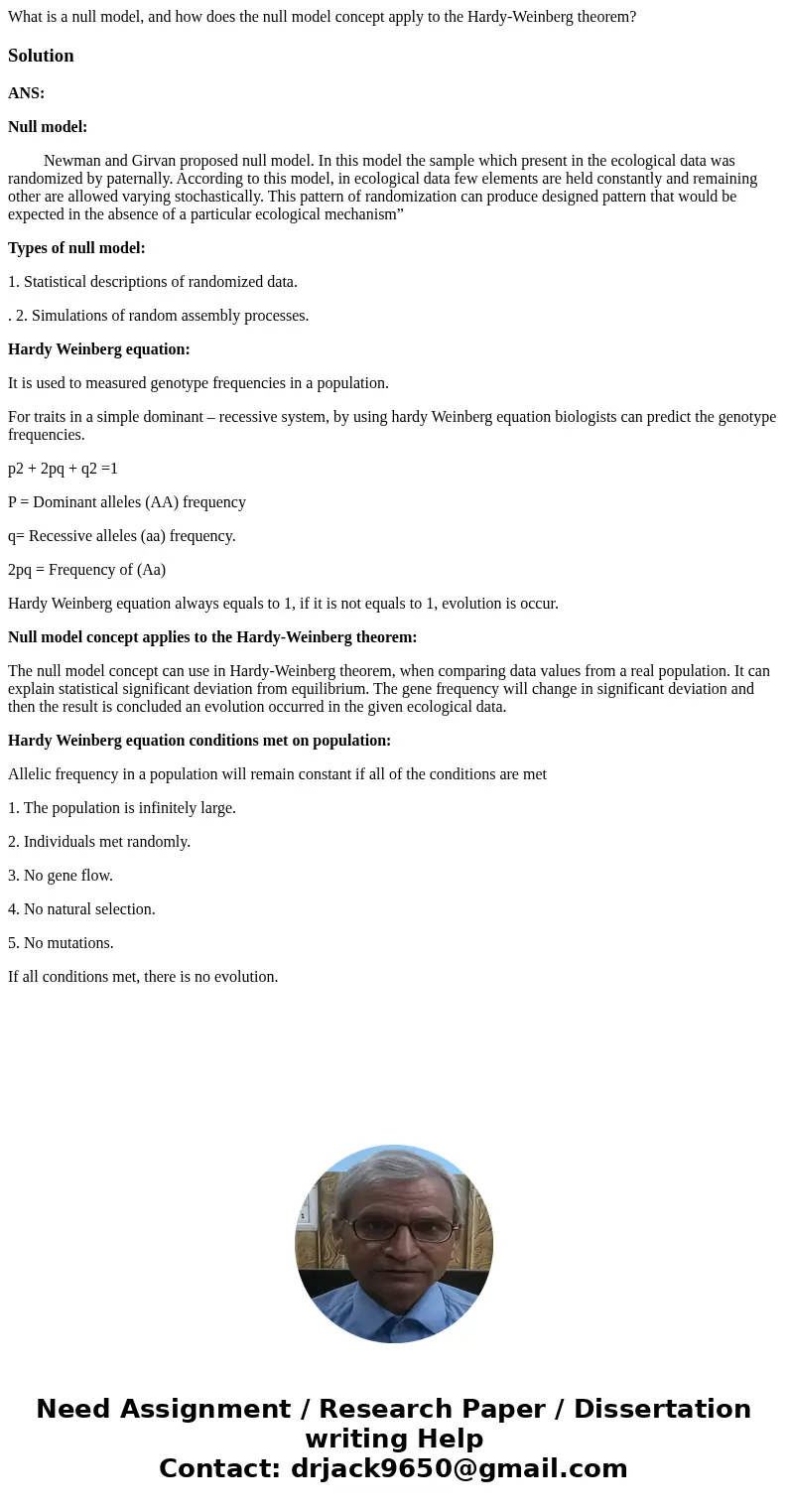What is a null model and how does the null model concept app
What is a null model, and how does the null model concept apply to the Hardy-Weinberg theorem?
Solution
ANS:
Null model:
Newman and Girvan proposed null model. In this model the sample which present in the ecological data was randomized by paternally. According to this model, in ecological data few elements are held constantly and remaining other are allowed varying stochastically. This pattern of randomization can produce designed pattern that would be expected in the absence of a particular ecological mechanism”
Types of null model:
1. Statistical descriptions of randomized data.
. 2. Simulations of random assembly processes.
Hardy Weinberg equation:
It is used to measured genotype frequencies in a population.
For traits in a simple dominant – recessive system, by using hardy Weinberg equation biologists can predict the genotype frequencies.
p2 + 2pq + q2 =1
P = Dominant alleles (AA) frequency
q= Recessive alleles (aa) frequency.
2pq = Frequency of (Aa)
Hardy Weinberg equation always equals to 1, if it is not equals to 1, evolution is occur.
Null model concept applies to the Hardy-Weinberg theorem:
The null model concept can use in Hardy-Weinberg theorem, when comparing data values from a real population. It can explain statistical significant deviation from equilibrium. The gene frequency will change in significant deviation and then the result is concluded an evolution occurred in the given ecological data.
Hardy Weinberg equation conditions met on population:
Allelic frequency in a population will remain constant if all of the conditions are met
1. The population is infinitely large.
2. Individuals met randomly.
3. No gene flow.
4. No natural selection.
5. No mutations.
If all conditions met, there is no evolution.

 Homework Sourse
Homework Sourse